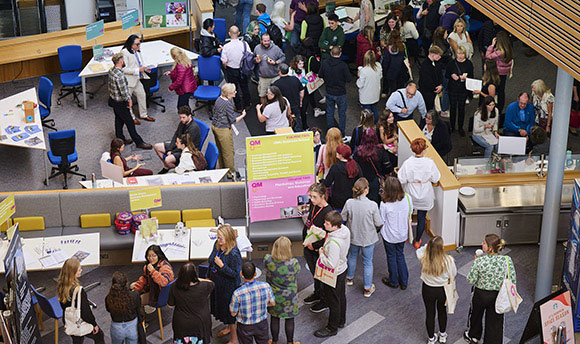It’s time for a toy like me
Dr Siân Jones is a senior lecturer in the Psychology, Sociology and Education Division at QMU. She has hemiplegia, a type of cerebral palsy, which means she is disabled.
GROWING UP, SIÂN noticed there were no toys in the toybox or the shops that looked like her. If there was a toy that depicted a person with a disability, there might be one with a wheelchair or crutches as part of a hospital set – implying that any physical impairment needed to be fixed. Siân acknowledges that much has been done in schools to represent ethnicity in recent years, but she wants to support teachers to demonstrate diversity of disability in the classroom. She discusses her research and her vision for toys like her to be an essential part of the school toybox!
“Toys are a way into a child’s world – in the words of toymakers, they mirror the world. If there isn’t an opportunity to play with disabled characters, or children don’t come across disabled people doing everyday things in books and films, we’re losing an opportunity to broaden the next generation’s understanding of the world and the
people in it.
There is growing evidence that toys and resources representing disability help non-disabled children think about making friends with disabled kids. Funding from the QMU Innovation Fellowship allowed me to work with colleague Dr Clare Uytman, QMU students and the charity, Toy Like Me, to explore the effect on the attitudes of children in Scottish primary schools when shown toys representing the disabled community. We also explored language use around disability, focusing on socially-minded rather than a medical understanding of disability.
“We asked children to write a story about a character before and after viewing and discussed images of adapted toy prototypes. These were toys like Barbie with a missing limb, or Olaf the snowman with a cochlear implant (the latter developed by Toy Like Me) alongside commercially available toys which represented a range of disabilities.
“Most stories showed a medical understanding of disability – that there is “something broken”, or “that needs to be fixed”. Some showed a more positive attitude towards disability, an assertion that disability should not lead to limitation, although with added suggestion that this was a potential cause for sadness and potential exclusion.
"Following the tasks, children’s reflections on what disability means tended to be more positive, and crucially, children recognised that disability should be seen as part of the wide spectrum of people around them.
“The General Teaching Council for Scotland republished the National Inclusion Framework in 2022. Within it is a series of principles of representation and accessibility which encourage teaching staff to reflect on the concept of disability in schools beyond meeting additional support needs. We realised how important it is to share our research with schools, particularly now they have responsibility to think more broadly about inclusion.
“Teachers need to represent diversity of disability, as they have done for ethnicity. It’s not just about just what’s in books – it's about what’s on the walls, and what’s going on in the toy corner. Instead of putting characters who use wheelchairs in the hospital
corner, move them to the house corner where they enact the tasks of everyday life!”
In 2023, Siân’s team released an accessible set of resources mapped to the Scottish Curriculum. The aim is to provide practical tools teachers need to ensure pupils see disabled people in everyday settings, and to broaden their understanding of disability.
Sian confirmed: “When disability is portrayed more prominently, our research shows only positive outcomes in children’s wellbeing and acceptance. So, let’s start by taking
a closer look at the contents of the school toybox!”



